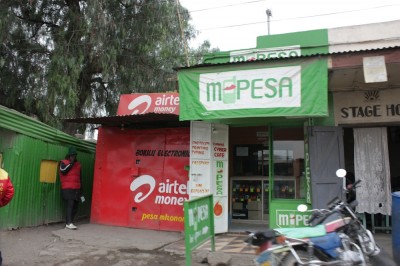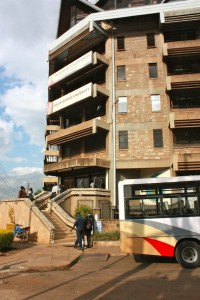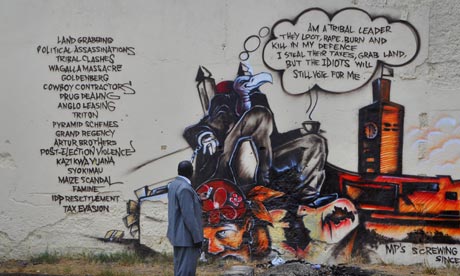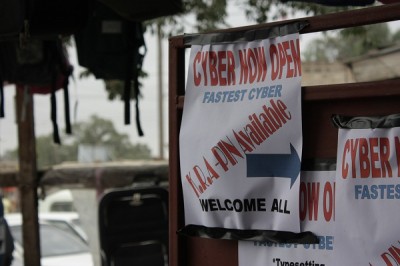Archive for the ‘Platforms’ Category
Where Opportunities Lie in the African Mobile Space
Africa straddles two realities. One is underpinned by the belief that Africa is the next frontier and measures the continent’s progress against an expected trajectory and momentum modeled on that which developed economies have followed in the past. As the continent leapfrogged wireline technology to adopt mobile at an astoundingly unexpected rate over the first 5 years of this millenium, it proved a point to the rest of the world. Africa is the present frontier. This is the other reality where the continent has brought to market a number of ‘firsts’. Airtel’s (Celtel at the time) borderless mobile network that features no roaming fees, the envy of European consumers. MPesa, Vodacom’s mobile money platform that has been very successful in Kenya and now growing in Tanzania and other countries.
According to the GSM Association, there are an estimated 649 million subscribers in Africa and an estimated 86 million being added to this number by the end of 2012 making Africa the world’s second largest mobile market and the fastest growing in the world. Even then, there’s still an estimated $36 billion of untapped revenue from growth in the 25 largest mobile markets on the continent. Unlike in developed nations, 96% of all subscriptions are pre-paid with voice dominating the revenue matrix. In some markets, data is growing considerably fast contributing significant revenues to the operators’ ARPU. Safaricom, for instance, generated just over $1.1b in revenue with voice calls contributing 67% a 1.2% drop on the previous year. Mobile and fixed data on the other hand jumped 81% compared to the previous year as subscribers used their modems and phones more to access the Internet. More Africans are buying mobile devices resulting in more endpoints added to a highly resilient, ubiquitous and geo-aware distribution platform for content and services.
The rise of mobile in Africa has brought with it obvious opportunities as well as a new class of opportunities that probably didn’t quite exist before. Opportunities for non-profits to reach more people at lower costs, governments to provide services more effectively and across larger geographies, for business to reach more customers and scale at lower cost. Mobile is making it possible for small and medium sized enterprises to compete with big business in ways they couldn’t just a few short years ago. Mobile isn’t just changing the operating landscape for consumer/citizen facing organizations, it’s changing the game. The trifecta of fast growing extensive data networks, cheap data-enabled handsets and a fast growing mobile money ecosystem is setting the stage for probably the greatest disruptions to the landscape yet. We are observing the emergence of fascinating opportunities in Africa, many which are providing new growth areas and could potentially power GDP growth further over the coming years. Here are a few;
- OpenGov and mGov – Govenments can now potentially reach more citizens than ever before with services that don’t require physical access to government offices. For instance, mobile allows governments to provide birth registration, community policing and even payment of taxes (Tanzania allows the use of MPesa for tax payments) at very low cost. It is also possible to now involve citizens in their own governance and scale programs further faster and cheaper than ever before. These also presents new opportunities for businesses that can provide governments with the tools they need to get the job done. Socrata and Knoema, for instance, provide visualization and analysis platforms for the Kenya government’s open data initiative and the African Development Bank Open Data for Africa portals respectively. However, there are still opportunities for developers who can build applications that help communicate public data in a way that citizens can easily understand on mobile phones.
- mHealth & mEducation – There are, as far as I can tell, no commercial successes in Africa in the mHealth and mEducation sub-sectors. However, programs like Dr. Math running on MxIt in South Africa and MOTECH currently in Ghana demonstrate the potential that lies untapped in the mobile platform as a channel. One of the ventures to watch is MedAfrica which is using Kenya’s Open Data in addition to other datasets provided by industry stakeholders to provide a commercial mHealth service.
- Financial intermediation – In this space lies the well known mobile-to-mobile money transfer services that emerged on the continent 5 years ago such as MPesa and Zap (now Airtel Money). Since then, the high and rapid penetration of mobile subscriptions and mobile money subscriptions in East Africa created new opportunities for financial services intermediation. Mobile-to-bank / bank-to-mobile services as well as mobile-to-web services that now make ecommerce via mobile money a reality have began to take hold. South Africa’s Fundamo has been present in the mobile money space since 2002 and was recently acquired by Visa International. Kenyan firm Cellulant, now serving institutions in at least 8 countries in sub-Sahara Africa is powering mobile banking services and content distribution via mobile phone for institutions such as Barclays Bank. Pesapal, launched in
20102009 as the first payment gateway that made ecommerce via mobile money a reality. It now also provides utility and bill payments via mobile money and debit/credit cards. Since its launch, other firms have emerged in that space including Bilmobile in Egypt, iPay in Kenya and many more. This continues to be a growth area across the region and one where new opportunities will continue to emerge. - Business platforms – Small and medium sized businesses adopted mobile money fairly early. However, they failed to integrate mobile with business infrastructure. That is changing now with players like VirtualCity providing supply chain platforms that make sales and distribution management solutions via feature phones and smart phones possible. Their DistributR solution is now available as SaaS with the potential to scale rapidly across the region. ERP maker SAP has also recently announced the launch of it’s mobile solution that will provide businesses on their BusinessOne platform with mobile extension of their ERP services. In the past, achieving this level of enterprise mobility required huge investments in infrastructure and software. Now mobile-powered business solutions can be rolled out by small business within days of the decision to acquire. Enterprise mobility is probably the least exploited opportunity by local developers and one which international firms with the technology and understanding of the African market could seize for growth.
Workshop: Designing Apps for the Masses (Inoorero University, Nairobi)
Developing mobile apps for service providers can have unique challenges. During this week’s workshop at Inoorero University, participants bumped into the reality of building a mobile app or services for service providers. It calls for an understanding of not only the immediate customer (the service provider) but also of their customer. These kinds of services can sometimes be soo focused on one group that they provide a poor experience for the other and yet both groups have to be kept happy to grow a sustainable business with a highly defensible business model.
Our workshops tour continues next month.
Message from Africa: We Have Money. We Will Buy.
This is the first of a four-part series on Africa, The Present Frontier.
The usual picture of Africa rarely includes middle class consumers and designer brands. In fact, it rarely portrays the other reality, the true potential that lies on the continent and in its people. Sadly, this robs many western brands off the opportunity to grow their businesses by establishing a presence on the continent. There’s a fast emerging middle class in Africa that has money and aspirations. Are there enough businesses supplying hope and the stuff they dream about?
In April 2011, the African Development Bank released a report on Africa’s Middle Class that showed the floating middle class has grown to over 20% of the population. This segment between the poor and the established middle class, is the only part of the economic pyramid that has had significant growth over the last 20 years achieving 100% growth in the last 30 years. They maybe susceptible to shocks that easily push them back into poverty but unlike their counterparts living in abject poverty, they have money to spend. With a population of 1 billion people, approximately 700million of whom have mobile devices, I can easily suppose a significant number of the floating class are connected. In itself, that is only important to telcos. However, it points to a growing trend everywhere else. An increasingly larger number of people with money to spend on connectivity (for whatever reason) signals a growing appetite for technology and services that connects people. It also signals a narrowing of the digital divide. Among many other signals emmanating from Africa, these two bode well for tech enterprise in Africa. Africa is attractive.
A number of brands in both tech and non-tech sectors have seen the signals from the continent and jumped on the opportunity to achieve phenomenal growth. Here are 7.
- Syngenta recently announced it’s intention to grow its Africa business to $1billion. The firm will invest $500million and grow its workforce by 700 over the next 10 years.
- Diageo has invested $1.5billion in Africa over the last 5 years. Their Kenyan unit, maker of the iconic Tusker beer brand, EABL was one of the first listed firms to breach the $1billion market capitalization milestone.
- Unilever currently earns over $3.5billion a year from its African operations and is working to double that within the next 5 years. A big part of their focus appears to be a push deeper into rural areas where a good number of the floating and middle income population live.
- Visa acquired South African payments firm Fundamo for $110million as part of their strategy to grow their business on the continent. Despite the apparent threat their business faces from mobile payments, Visa sees great potential on the continent and executives contend that mobile payments won’t put them out of business. The acquisition of Fundamo signals their intent to never let mobile out of their sight.
- Samsung grew revenues in Africa to $1.2billion by 2010 and began a push to grow this to $10billion by 2015 with investments of $140million on the continent. Africa is the fastest growing market for mobile phone market in the world.
- Designer cosmetics maker L’Oreal expects Africa’s middle class to double over the next 10 years. It aims to grow its market 10%-20% year on year until it attains a 16% market share in Africa.
- Nokia was until recently the world’s largest mobile phone vendor. It’s number 1 position is now held by Samsung. However, five years ago, Nokia’s sales in Africa were estimated at $7billion (according to Wikinvest). It’s ability to churn out devices that struck a chord with African consumers was legendary and is still one of the continent’s most recognizable brands.
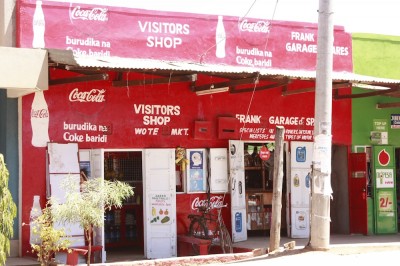
CocaCola branded shop in Kenya's Makueni District. CocaCola is the most successful beverages and FMCG business in sub-Sahara Africa.
Macroeconomic signals emanating from the continent have of course played a big role in attracting foreign investment. GDP growth in African countries touches double digits in some countries, growth rate unlikely to be witnessed in developed economies where economic growth has stagnated for some and shrunk in others (hello Greece!). Driven by agriculture, tourism, minerals and financial services, economies on the continent have outperformed those in the west even during the worst of the recent financial crisis. Sub-sahara Africa in particular has seemed insulated from the chaos in financial markets in the rest of the world. Africa is growing.
Whilst the usual story about Africa has attracted non-profits and social entrepreneurs to the continent, the story of consumer aspirations, economic growth, political stability and an increasingly educated and savvy population has attracted their for-profit counterparts. Some of the social enterprises that have setup shop here have had great success whilst others have come to Africa to die. A good indicator of whether a social enterprise will succeed on the continent is sometimes determined by how effectively it communicates hope to its market. When marketing and communications departments use the same tone for fundraising in the west to sell merchandise in Africa, one can expect dismal results because the tone in the fundraising message is one of hopelessness and desperation.
For-profit enterprises have not had to struggle with this dual-message strategy. Their message is usually ‘Buy my great stuff’ or ‘My stuff will make you great’. Even when they deliver very little hope, it goes a longer way than low prices. Some big brands have learned this the hard way. Expecting to acquire huge market share by adopting a low-margin high-volume business model that was successful in India, Airtel was handed a rude shock by the continent and has had to go back to the drawing board.
As some have suggested, hope can make a big difference to those living in economic hardship sometimes resulting in higher spending. Africa has great aspirations. Some brands have known this all along and have been handsomely rewarded by customers in Africa. Here are two brands that have always had great success with the BoP customer in Africa.
- Safaricom is East Africa’s largest mobile phone company with the world’s most notable mobile money platform, MPesa. Here’s an ad campaign they have been running recently in Kenyan media. Even with the most expensive on-net calls Safaricom remains by far the largest network by subscriber numbers and revenue.
- Coca Cola has been very successful in Africa. Present in 56 countries and territories on the continent and with over 160 bottling plants this soft drinks maker has a distribution channel that is the envy of many in the fast moving consumer goods industry. In places where there is no medication, education or even healthcare, you may still find a Coke. Their advertising seeks to inspire and the results speak for themselves. Here’s an ad currently running on African television as part of their 1 Billion Reasons to Believe in Africa campaign.
Fast growing economies, a fast growing middle class, political stability and a growing ICT sector are current features of Africa that make it a great place to be for those seeking to expand. It is also increasingly attractive for technology businesses that understand the African customer or are willing to take the time to do so. Some of the top performing brands in Africa today understand this and have been on the continent for a long time. While everyone else was talking about Africa being the next frontier they saw Africa as the present frontier. It’s still early enough for businesses to establish a presence with new products and services that have not existed on the continent. Like Wonga launching it’s first international location in South Africa.
Africa is here. The message from Africa to the rest of the world is simple.
Have money. Will buy. Who’s selling?
Bringing Social Objects to Citizen Empowerment
Sparking conversations among citizens is the first step to creating change.
Kenyans woke up to a pleasant surprise one March morning. Graffiti with a political message sprayed on walls in Nairobi’s central business district. And not the terrible kind that is an eye-sore with good intentions. This was “stop-and-stare” graffiti that not only made news in Kenya but overseas as well.
Tweet
The Digital Divide and the Road to e-Government
Approximately one in every four Kenyans has access to the Internet (Julisha ICT Market Survey, CCK sector statistics ) and half of them get this access at the cyber café. Cybercafe’s therefore play a big role in how Kenyans get online despite the large numbers of mobile internet subscriptions in the country. The vast majority of these Kenyans live in large urban centers or in close proximity to them. These are important facts to keep in mind as the Government and private sector actors push towards the Internet as a channel for service delivery for all.
Government (the democratic sort) is by definition inclusive therefore services offered by democratic governments are predicated on the simple premise that government CAN deliver services to ALL. This is why bridging the digital divide and e-government are joined at the hip. This premise of inclusiveness is a great place to start any conversation about e-governance but also provides a long term challenge to governments in emerging economies/democracies that are implementing e-government strategies for their people. African governments are making progress towards implementation of e-government with countries like Kenya taking transparency online through open data. The Kenyan government also created in 2004 a government department that coordinates e-governance and reports to the Cabinet. Its view on e-government’s role and one of the predetermined goals is articulated on its website as;
“encourage participation of citizens in Government and empower all Kenyans in line with development priorities…” www.e-government.co.ke
The government of Rwanda has won a Technology in Government in Africa Award three times since their launch in 2007 because of its focused implementation of e-government strategy especially in the area of public service delivery.
So what should remain top-of-mind for those developing policy and strategy for e-government in Africa in view of the challenges of maintaining inclusiveness?
- Continued investment in infrastructure. Any conversation about last-mile connectivity within the context of telecentres and cybercafés is of course restricted to facility level infrastructure. However, this infrastructure is for the most part transparent to those sitting behind the keyboard. In addition to the last mile, we need infrastructure that brings connectivity to the citizens finger tips. This is includes actual telecenter/cybercafé facilities that deliver internet services to the people. Incentives such as low cost loans can spur private sector investment in these facilities in places where they don’t exist in sufficient numbers. The Kenya ICT Board has a loan program for telecentre entrepreneurs called the Digital Villages Project or Pasha which is currently in its second cycle. An additional parallel program should be considered to put telecenters in areas where nascent demand exists but return on investment is low at best making them unattractive to investors.
- Caps on pricing of e-government services. A tour of cyber cafes across parts of Kenya earlier this year revealed that it costs more to get a KRA pin in rural areas than it does in the large cities. At KSh200 in Mbumbuni and KSh100 in Mombasa the pricing is skewed in favor of those within walking distance of government offices. Of course walking there may not do you any good as services like those offered by the Kenya Revenue Authority are 100% online (unless KRA invests in some kind of cyber banking hall?). Pricing for e-government services at cybercafés is currently set by the market so capping it at a more accessible level would keep the services within reasonable reach of the masses.
- Incentives for private enterprise – In areas where private enterprise lacks the incentive to invest in last-mile infrastructure or facilities (telecentres/cybercafés/digital villages et al), an incentive policy should be considered such as subsidies on Internet bandwidth, low cost space in government buildings or free technical support to encourage private sector players to make the necessary investments. Invariably, cybercafés play an intermediating role in the provision of these services by providing education and set up for customers. Incentivizing this and encouraging them to keep the services available ensures that the majority who will access e-government services in these places remain included.
Government efforts to ensure the survival of cybercafés through regulation, incentives and price caps should also take into consideration the existing free market environment in order not to create an unfair advantage for a few players.
This is by no means an exhaustive list as there are other considerations that should be given a high share-of-mind. These three, not necessarily listed in order of importance, are simply those I have pondered about in the last few weeks. I’d love to hear more and your opinion of course.
